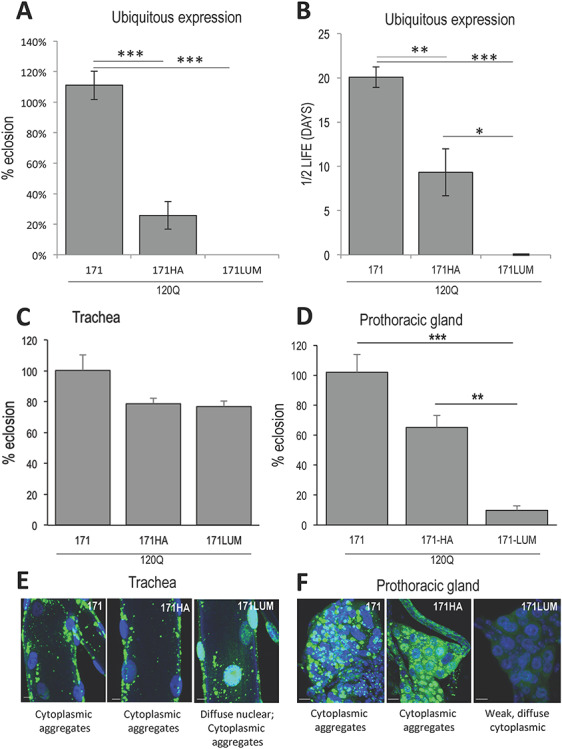Figure 4.

The influence of peptide modifications on HTT171 fragment behavior. (A) When expressed ubiquitously with da > Gal4, the HTT171-120Q fragment exhibits little or no lethality, but appending either an HA (…YPYDVPDYA*) or a LUM tag (…GCCPGCCGG*) to the C-terminus greatly increases the toxicity of the fragment. (B) Surviving adult flies expressing an HA-tagged HTT171 transgene exhibit about half the life-span of those expressing untagged 171. Flies expressing LUM-tagged HTT171 do not survive to adulthood. (C) Flies expressing HA- or LUM-tagged 171 in tracheal cells show only modest increases in lethality that do not rise to the level of significance (P = 0.12; 0.09), but the inclusion of tags changes the subcellular behavior significantly. (D) In contrast, in the prothoracic gland, expression of LUM-tagged 171 shows significant increase in toxicity compared to 171 alone, while the HA-tagged 171 borders on significance (P = 0.051). (E) In trachea, pure 171 forms cytoplasmic aggregates, while inclusion of HA causes some HTT to become nuclear diffuse, and inclusion of the LUM tag causes the bulk of the HTT to appear as diffuse nuclear material with some cytoplasmic aggregates remaining when expressed with btl > Gal4 at 29°C. (F) In the prothoracic gland, addition of the LUM tag causes aggregated-cytoplasmic HTT to become weakly staining diffuse-cytoplasmic material while HTT171HA remains as extensive aggregates in the cytoplasm with a haze of diffuse staining as well. Scale bars are 10 μm.
